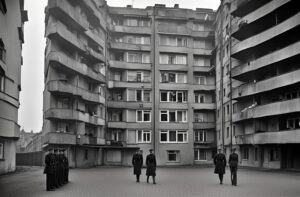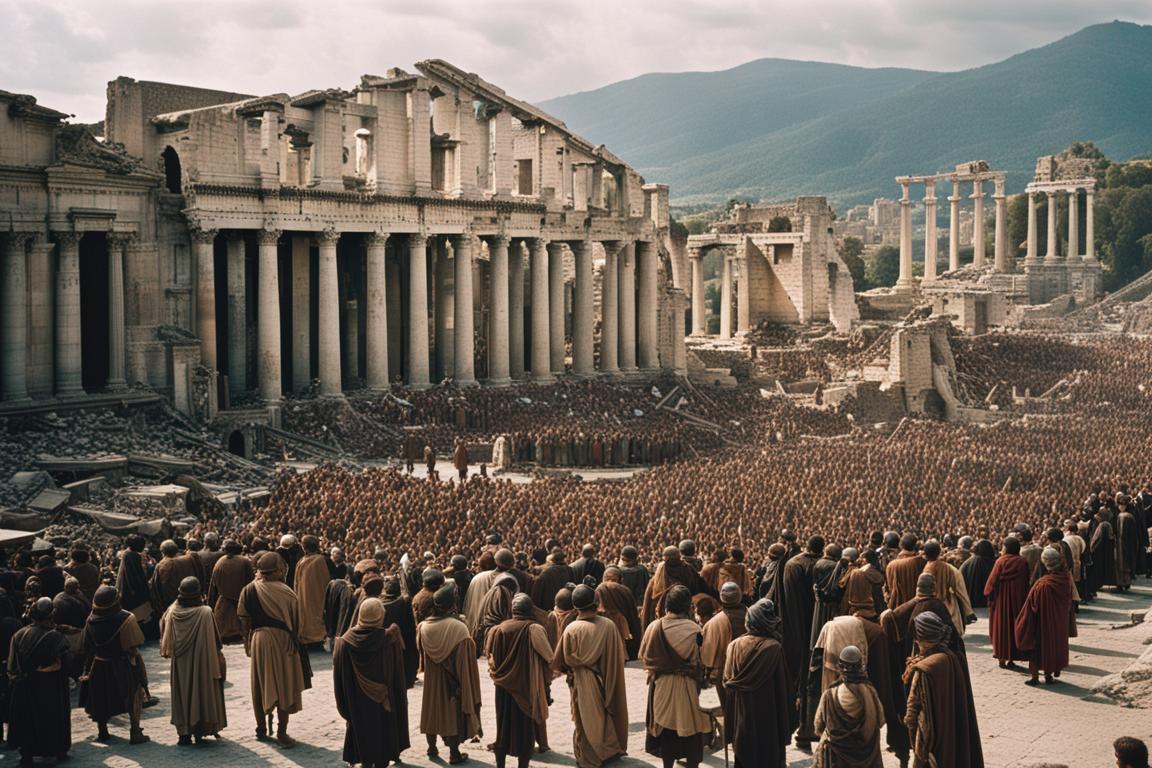
The Wall, a symbol of division and oppression, still stands tall, casting its shadow over a divided Berlin and an even more fragmented world. The Cold War never ended, and the Iron Curtain remains firmly in place, separating East and West.
In this world, the two Germanys have evolved into starkly contrasting societies. West Germany, backed by NATO and the United States, has become a technological powerhouse and a beacon of capitalism and democracy. Skyscrapers pierce the sky in cities like Frankfurt and Munich, and the autobahns are filled with electric cars and self-driving vehicles. The West German government, in an effort to outpace its Eastern counterpart, has invested heavily in technology, education, and infrastructure. As a result, West Germany is a land of opportunity where innovation thrives, and the standard of living is among the highest in the world.

In stark contrast, East Germany remains a bastion of Soviet-style communism. The Stasi, the secret police, still maintain a tight grip on the population, and dissent is swiftly and brutally crushed. The economy is stagnant, and the people live in a state of perpetual fear and deprivation. The government, under the iron-fisted rule of the Socialist Unity Party, has failed to adapt to the changing world, and East Germany has become a relic of a bygone era. The streets of East Berlin are filled with crumbling buildings and dilapidated infrastructure, stark reminders of the regime’s failure to provide for its people.
The Wall itself has become a symbol of the ongoing struggle between East and West. It is no longer just a physical barrier but a psychological one, representing the ideological divide that still defines the world. Families remain separated, and the dream of reunification seems more distant than ever. The Wall is heavily fortified, with guard towers, barbed wire, and minefields, making any attempt to cross it a deadly gamble.
In this divided world, espionage and subterfuge are the order of the day. Both sides engage in a constant game of cat and mouse, with spies and double agents working tirelessly to gather intelligence and undermine their adversaries. The Berlin Wall has become the epicenter of this clandestine war, with both sides vying for control of the city and its secrets. The CIA and the KGB are locked in a never-ending battle, each trying to outmaneuver the other in a high-stakes game of espionage.

Amidst this backdrop of tension and intrigue, a young woman named Anna finds herself caught in the crossfire. Born in East Berlin, Anna has always dreamed of a life beyond the Wall. Her father, a dissident writer, was imprisoned by the Stasi when she was just a child, and her mother has struggled to provide for her ever since. Anna’s only solace is her art, and she spends her days painting vivid, abstract landscapes that offer a glimpse of the freedom she so desperately craves.
One fateful night, Anna’s life takes a dramatic turn. She is approached by a mysterious figure who claims to be a member of an underground resistance movement. The man, known only as “The Raven,” offers Anna a chance to escape to the West and reunite with her long-lost father, who managed to flee East Germany years ago. Desperate and determined, Anna agrees to join the resistance, embarking on a perilous journey that will take her deep into the heart of the Cold War’s most dangerous territory.
As Anna navigates the treacherous world of espionage and subterfuge, she discovers that the resistance is not just a ragtag group of rebels but a highly organized network with connections to Western intelligence agencies. The Raven reveals that they have a plan to bring down the Berlin Wall once and for all, a daring operation that could change the course of history. Anna’s role in the mission is crucial; her artistic talents will be used to forge documents and create disguises, allowing the resistance to infiltrate key government installations.
The plan is set into motion, and the resistance begins to execute their audacious scheme. As the day of the operation approaches, tensions rise, and the stakes become higher than ever. Anna finds herself torn between her desire for freedom and the fear of what might happen if they fail. But she knows that this is her only chance to make a difference, to fight for a future where the Wall no longer stands.
In a dramatic climax, the resistance launches their attack, targeting the Wall’s most heavily fortified sections. Explosions rock the city, and chaos ensues as the people of East Berlin rise up against their oppressors. The Stasi are caught off guard, and the resistance fighters manage to breach the Wall, creating a path to freedom. Anna, with her heart pounding, makes her way through the chaos, determined to reach the West and find her father.
As she crosses the threshold of the Wall, Anna looks back one last time at the crumbling barrier that has defined her life. She knows that the fight is far from over, but for the first time, she feels a glimmer of hope. The Berlin Wall may still stand, but its days are numbered, and the dream of reunification is closer than ever. In this alternate world, the fall of the Wall is not just a moment in history but a testament to the enduring human spirit and the unyielding desire for freedom.




